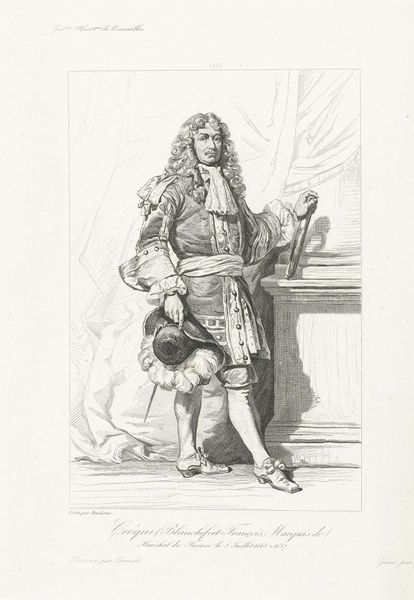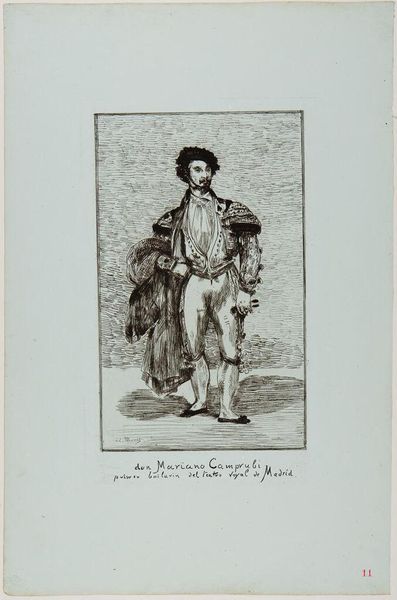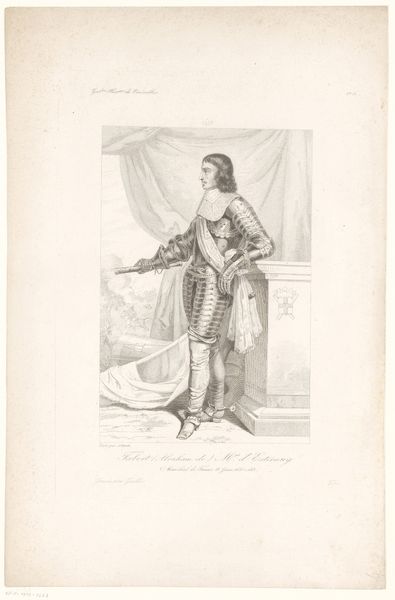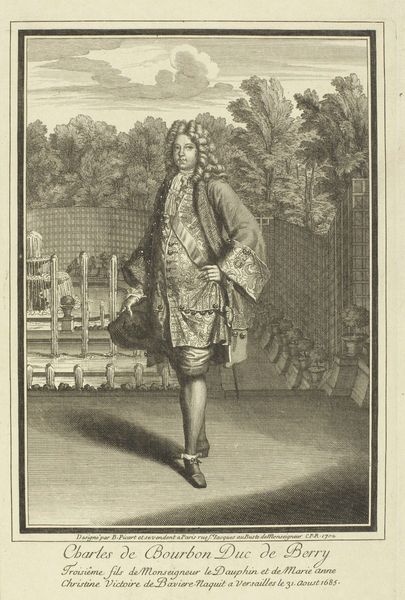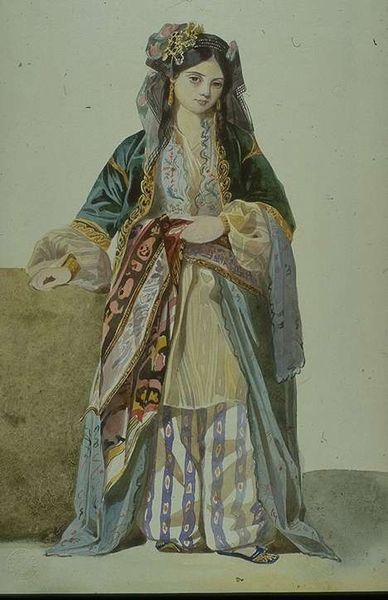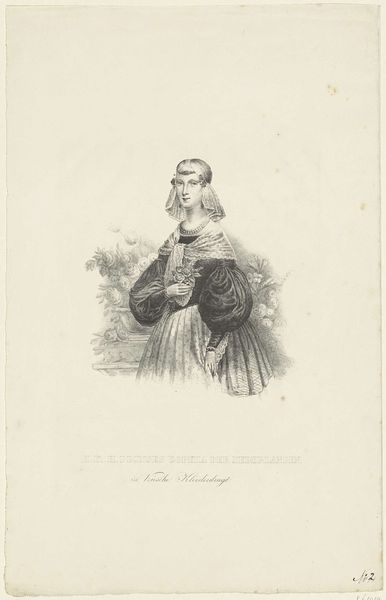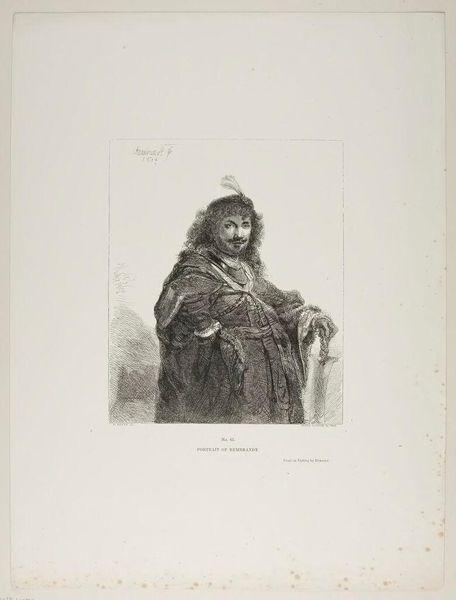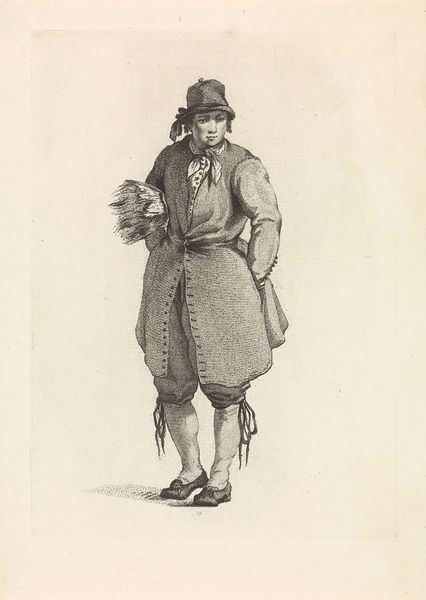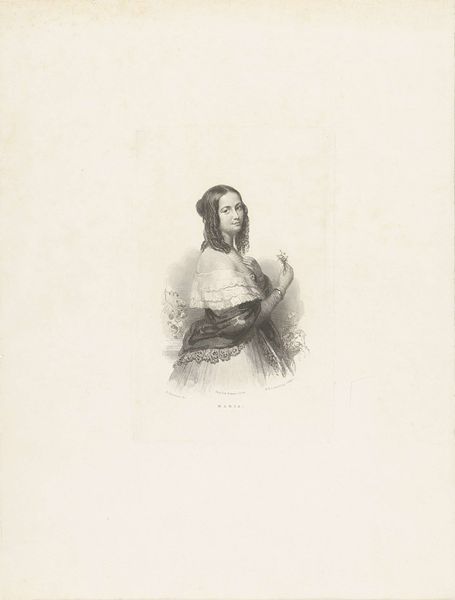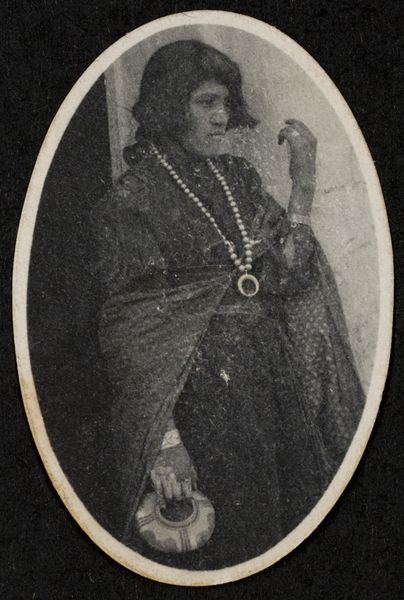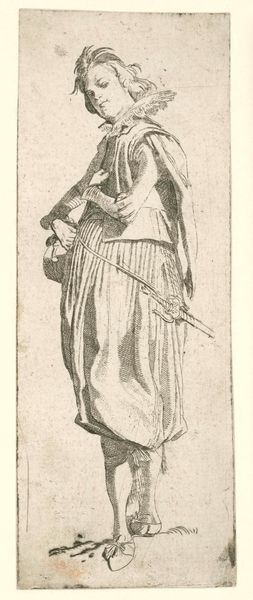
Dimensions: height 274 mm, width 188 mm
Copyright: Rijks Museum: Open Domain
Editor: So, here we have Johannes de Mare's 1837 engraving, a portrait of Jacques II de Castelnau-Mauvissière. It feels very theatrical to me, almost like a stage costume. What catches your eye when you look at this image? Curator: The figure, poised and adorned, speaks volumes about power and societal expectations. Notice the emphasis on attire, the layers of fabric, the meticulously rendered lace – each detail signals status and control. How do you interpret the symbolism embedded in his clothing and posture? Editor: Well, it definitely says he’s important! Maybe powerful military figure, with the armour... but I don’t know the specifics. It’s interesting to consider what’s deliberate and what’s simply the fashion of the time. Curator: Indeed. The armour isn't purely functional. It's invoking an idea of strength and protection, acting as a symbolic barrier. Consider also the sword. Is it a tool or a symbol? How does the artist use these visual cues to construct an image of authority? Editor: That makes sense. It’s like a language of symbols that everyone at the time would have instantly understood. Now we need to decode them! It is fascinating to look at the details differently. Thanks! Curator: It is through such layered symbols that cultures transmit their values and aspirations. Reflecting on how an artist uses these signs offers profound insight, and brings a richer awareness to the surface.
Comments
No comments
Be the first to comment and join the conversation on the ultimate creative platform.
